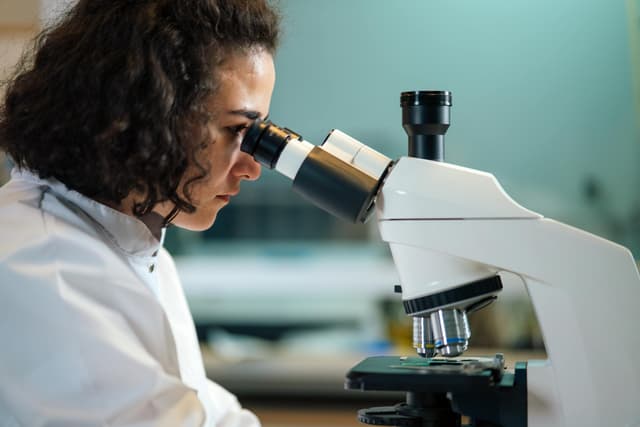Starter quiz
- In which state does water take the shape of the bottom of its container?
- 'liquid' ✓
 In which state does water have a fixed shape except when a force is applied to it?
In which state does water have a fixed shape except when a force is applied to it?- solid ✓
- liquid
- gas
-
 Put the forms of water in order, from the one which would occur at the lowest temperature, to the one which would occur at the highest temperature.
Put the forms of water in order, from the one which would occur at the lowest temperature, to the one which would occur at the highest temperature.- 1⇔solid
- 2⇔liquid
- 3⇔gas
- ______ are the things that can be changed, measured or kept the same in a comparative or fair test.
- 'Variables' ✓
- How many variables should you keep the same in or control in a comparative or fair test?
- 0
- 1
- all but 1 ✓
- it doesn't matter
-
 ______ is the change in state from a liquid to a gas.
______ is the change in state from a liquid to a gas.- 'Evaporation' ✓
Exit quiz
 Scientists use a range of equipment to make careful __________.
Scientists use a range of equipment to make careful __________.- predictions
- observations and measurements ✓
- conclusions.
-
- Which of these diagrams shows evaporation?
- Match the equipment to the measurement you would make with it.
- measuring jug⇔volume of liquid ✓
- stopwatch⇔time ✓
- thermometer⇔temperature ✓
- Why do scientists collect data?
- to make tables and graphs
- to answer questions ✓
- to design new products
-
- How does the speed of evaporation change as temperature increases?
- The speed of evaporation is not affected by temperature.
- Evaporation gets slower as temperature increases.
- Evaporation gets quicker as temperature increases. ✓
-
 Which of these conclusions do these data support?
Which of these conclusions do these data support?- Evaporation is not affected by temperature.
- Evaporation gets slower as temperature increases.
- Evaporation gets quicker as temperature increases. ✓
-
Worksheet
Loading worksheet ...
Presentation
Loading presentation ...
Video
Lesson Details
Key learning points
- Scientists make careful observations and measurements, using a range of equipment.
- The results of an investigation can be recorded in different ways.
- Scientists use data they have collected to answer questions.
- Although water can evaporate at low temperatures, the speed of evaporation increases as the temperature increases.
Common misconception
Children may believe that water cannot exist in a gas state because they cannot see it. They may also think that evaporation only occurs at high temperatures.
Teaching slides explain the existence of water vapour, even though it is invisible. By investigation, children observe and measure that evaporation occurs at all temperatures.
Keywords
Evaporation - Evaporation is the change in state from a liquid to a gas.
Temperature - Temperature is a measure of how hot something is.
Variables - Variables are the things that can be changed, measured or kept the same in a comparative or fair test.
Conclusion - In a conclusion, scientists explain what the results show or mean.
+

